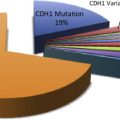In the past decade, laws have been passed to provide legal protections against genetic discrimination. Many members of the public and medical providers are unaware of the legislation, and concerns about genetic privacy can prevent delivery of optimal medical care. Patient health information, including genetic testing and family history, is protected under the Health Insurance Portability and Accountability Act and the Genetic Information Nondiscrimination Act. Additional protections are granted through the Americans with Disabilities Act, state laws, and the Affordable Care Act. Communicating a genetic test result back to a patient is important for medical management decisions and family members.
Key points
- •
Federal and state laws are now in place to prohibit many forms of genetic discrimination including health insurance eligibility, coverage, and rates, and employment.
- •
Patient health information including genetic testing and family history are protected under the Health Insurance Portability and Accountability Act and the Genetic Information Nondiscrimination Act.
- •
Some groups are not covered by current regulations.
- •
Physicians have a duty to warn patients that they and their relatives are at risk from a genetically transferable condition, but they must rely on the patient to communicate with family members.
Introduction
Fears about genetic discrimination plague patients and providers alike. These concerns can arise throughout the genetic testing process: before testing, after results are received, and when patients are deciding what type of cancer screening or risk reduction measures they should take based on their results. Some of the major concerns expressed by patients and providers around genetic discrimination include
- •
“Could I lose my health insurance if my genetic test comes back positive?”
- •
“If I have genetic testing, will my insurance premiums increase?”
- •
“What if my employer finds out I’m at high risk for cancer; could I be fired or demoted?”
- •
“Should I recommend genetic testing for my patient if it could cause him/her problems obtaining health insurance?”
When genetic testing for hereditary cancer risk first became clinically available in the mid-1990s, comprehensive legal protections prohibiting genetic discrimination did not exist. Both patients and clinicians were wary of the potential for genetic discrimination.
The current state of affairs in the United States is quite different. Both federal and state laws are now in place to prohibit many forms of genetic discrimination. Despite this, many patients and clinicians are unaware of these protections. A 2010 study conducted by Parkman and colleagues used questions added to the Behavioral Risk Factor Surveillance System (BRFSS) survey in 4 states to assess public knowledge regarding legal protections from genetic discrimination. Only 13.3% to 19.1% of respondents indicated that they were aware of laws (such as the Genetic Information Nondiscrimination Act, GINA) that “prevent genetic test results from being used to determine health insurance coverage and costs.” In 2009, Laedtke and colleagues sent surveys to 1500 members of the American Academy of Family Physicians assessing their knowledge of GINA and their concerns regarding genetic discrimination. Of the 401 physicians who responded, over half (54.5%) were not aware of GINA, and 44% were “highly concerned” about their patients’ potential risk for genetic discrimination in health insurance.
This article reviews the current legal protections against genetic discrimination, how they can affect both patients and their families, and perspectives on how current protections will be applied to an ever-changing genetic testing landscape. It will focus on how this information can be used by surgeons to help reassure their patients regarding the protections that exist and also educate them about loopholes where safeguards are not currently in place.
Introduction
Fears about genetic discrimination plague patients and providers alike. These concerns can arise throughout the genetic testing process: before testing, after results are received, and when patients are deciding what type of cancer screening or risk reduction measures they should take based on their results. Some of the major concerns expressed by patients and providers around genetic discrimination include
- •
“Could I lose my health insurance if my genetic test comes back positive?”
- •
“If I have genetic testing, will my insurance premiums increase?”
- •
“What if my employer finds out I’m at high risk for cancer; could I be fired or demoted?”
- •
“Should I recommend genetic testing for my patient if it could cause him/her problems obtaining health insurance?”
When genetic testing for hereditary cancer risk first became clinically available in the mid-1990s, comprehensive legal protections prohibiting genetic discrimination did not exist. Both patients and clinicians were wary of the potential for genetic discrimination.
The current state of affairs in the United States is quite different. Both federal and state laws are now in place to prohibit many forms of genetic discrimination. Despite this, many patients and clinicians are unaware of these protections. A 2010 study conducted by Parkman and colleagues used questions added to the Behavioral Risk Factor Surveillance System (BRFSS) survey in 4 states to assess public knowledge regarding legal protections from genetic discrimination. Only 13.3% to 19.1% of respondents indicated that they were aware of laws (such as the Genetic Information Nondiscrimination Act, GINA) that “prevent genetic test results from being used to determine health insurance coverage and costs.” In 2009, Laedtke and colleagues sent surveys to 1500 members of the American Academy of Family Physicians assessing their knowledge of GINA and their concerns regarding genetic discrimination. Of the 401 physicians who responded, over half (54.5%) were not aware of GINA, and 44% were “highly concerned” about their patients’ potential risk for genetic discrimination in health insurance.
This article reviews the current legal protections against genetic discrimination, how they can affect both patients and their families, and perspectives on how current protections will be applied to an ever-changing genetic testing landscape. It will focus on how this information can be used by surgeons to help reassure their patients regarding the protections that exist and also educate them about loopholes where safeguards are not currently in place.
Current legal framework in the United States regarding genetic discrimination and genetic information privacy
The Americans with Disabilities Act
The Americans with Disabilities Act (ADA) was passed in 1990. The primary purpose of the ADA is to prevent discrimination against individuals with disabilities in the workplace and to set enforceable standards for accessibility in public and commercial buildings, transportation, and communication services (specifically telecommunications device for the deaf/telephone relay services). It provides some limited protections regarding genetic discrimination with regard to hereditary cancer predispositions to individuals employed by an employer with 15 or more employees. Some state laws also ban employers from discriminating against individuals on the basis of disability. If an individual has a genetic disease that causes symptoms that significantly impair a person’s ability to perform one or more functions, then their disease qualifies as a disability under the ADA. This would then afford an individual protection from employment discrimination under the ADA, as long as they are able to perform the duties of their job with reasonable accommodations. Some hereditary cancer syndromes can be associated with cognitive impairment (such as PTEN hamartoma tumor syndrome), which may classify as a disability for some individuals. Others may have experienced debilitating effects following their cancer treatment that could potentially rise to the level of a disability. However, most individuals with hereditary predispositions to cancer do not have disease effects that rise to the level of disability.
Confidentiality and the Health Insurance Portability and Accountability Act
The Health Insurance Portability and Accountability Act (HIPAA) was passed in 1996. The primary goal of the law is to make it easier for people to keep health insurance (Title 1, Portability), protect the confidentiality and security of health care information and help the health care industry control administrative costs (Title II, Administrative Simplification). In 2013, the HIPAA privacy rule was modified to prohibit most health plans from using or disclosing genetic information (individual or family) for underwriting purposes. This includes determining eligibility, benefits under the plan, coverage, and premiums.
The portability section
The portability section of HIPAA provides rules for continuity in health insurance coverage for individuals and their families if they change jobs. It limits restrictions that a group health plan can place on benefits for preexisting conditions. Health plans cannot consider pre-existing conditions if there is no more than a 63-day lapse in coverage.
The Health Insurance Portability and Accountability Act privacy rule
The HIPAA privacy rule provides federal protection for individually identifiable health information. This includes information in patient health record, conversations with care providers, billing information, and information that the patient is seen at the clinic. It has 3 major components: how data are protected, when data can be disclosed, and the patient’s rights to this information.
Data protection
The HIPAA security rule establishes national security standards for protecting health information that is held or transferred in electronic form. In general, these laws apply to covered entities, which include health plans, most health care providers, business associates and subcontractors of covered entities, and health care clearinghouses.
Disclosure
Disclosure of health information is permitted for treatment, care, and payment. It can also be disclosed to others the patient identifies as involved with health care, termed personal representatives. It can be disclosed to protect the public’s health (eg, contagious conditions) and in police reports (eg, gunshot wounds).
Patient rights
Patients have the right to see and obtain a copy of health records, have corrections added, receive notice of how their information may be used and shared, receive a report on when and why health information was shared, and file a complaint with the health provider, insurer or US government.
Organizations exempt from following privacy and security rules
Examples of other organizations exempt from following privacy and security rules include: life insurers, schools, workers compensation carriers, law enforcement, and many state agencies like child protective services. An employer can also ask for a doctor’s note or other information if an employer needs information to administer sick leave, worker’s compensation, wellness programs, or health insurance. However, the health care provider can not release this without authorization from the patient.
State laws prohibiting genetic discrimination
Prior to the enactment of GINA in 2008, many states had laws prohibiting genetic discrimination. One difficulty with these laws is that they differed from state to state. Some laws only extended protection to people with individual health care policies and not group policies, or vice versa. Other laws were very narrow (eg, only focusing on requiring patient consent before genetic information could be shared with his or her health insurance company). Because hereditary cancer predispositions are by nature a family affair, under such laws the proband initially seeking genetic testing could live in a state with strong legislative protections while his or her potentially at-risk relatives could reside in states with no protections. This presented quandaries for patients whose families were spread throughout the United States before GINA provided a baseline level of protection across the nation.
As of 2014, 48 states plus Washington D.C. have laws in place that prohibit forms of genetic discrimination in health insurance. Regarding employment protections, 35 states plus Washington D.C. have laws prohibiting some types of genetic discrimination. Of note, some state laws provide stronger protections than GINA, or prohibit genetic discrimination in other areas not covered by GINA (such as life insurance or long-term disability insurance). GINA is explicitly written so that the most comprehensive law in effect for an individual person (whether that be GINA or a stronger local law) takes precedence. For a complete list of the state protections regarding genetic discrimination in health insurance enacted prior to GINA, please see the list compiled by the National Conference of State Legislatures.
Genetic Information Nondiscrimination Act
GINA was the culmination of 13 years of debate at the federal level regarding the best way to provide genetic discrimination protections to the American public. The first such bill was introduced to Congress in 1995, but it was not until May 21, 2008, that the final bill, GINA, was enacted; GINA’s protections fully came into effect over the course of the next 3 years. Lauded as the “first major civil rights bill of the century” by Senator Edward Kennedy (D, Massachusetts), GINA provides the majority of the American public a baseline level of protection against genetic discrimination in the workplace and health insurance realms.
As its name suggests, GINA involves regulations regarding the collection and use of genetic information as well as prohibitions on genetic discrimination. GINA specifically applies to health insurance plans and employers (with a few exceptions noted later). It is important to note that GINA does not provide legal protections against genetic discrimination in other types of insurance underwriting or enrollment, including life insurance and short-/long-term disability insurance.
GINA defines genetic information broadly, including not only genetic test results, but also genetic services (such as documentation of a patient meeting with a genetic counselor, and family health history) ( Box 1 and 2 ). With few exceptions ( Box 3 ), it prohibits health insurance plans and employers from requesting, requiring, or collecting genetic information on an individual or his or her family members (out to fourth-degree relatives). One exception is that a health insurance plan may request the results of an individual’s genetic test (or family history) to determine coverage of a procedure. Also, if no genetic testing has been performed and an individual is requesting a specific procedure because of his or her family’s history of cancer, a health insurance plan may request that genetic testing be completed. This could apply to a woman with a BRCA1 mutation requesting that her insurance cover an annual breast MRI or prophylactic mastectomy due to her high lifetime risks for breast cancer. Her insurance company may request to see a copy of her BRCA1 genetic test results in order to confirm that she is truly at high risk for breast cancer and that the requested screening/surgery is warranted. Under GINA, employers are also allowed to collect genetic information in certain limited circumstances (eg, collecting family health history as part of a workplace wellness program).
Individual and group health insurance plans cannot
- •
Require an individual to undergo genetic testing for underwriting or enrollment purposes (ie, determining premiums or starting/terminating coverage)
- •
Request genetic information (genetic test results, information on genetic assessment services pursued by the patient, or family history information) for underwriting or enrollment purposes
- •
Most employers cannot
- •
Request an individual to undergo genetic testing for hiring, termination, promotion, or placement decisions
- •
Request information (genetic test results, information on genetic assessment services pursued by the patient, or family history information) on an individual for hiring, termination, promotion, or placement decisions
- •
Health insurance
Most individual and group health insurance plans cannot
- •
Use an individual’s genetic information for underwriting or enrollment purposes (ie, determining premiums or starting/terminating coverage)
- •
Most individual and group health insurance plans can:
- •
Request genetic information (ie, genetic test results or family history) for the purpose of determining coverage of a specific procedure/claim (ie, a cancer screening or prophylactic surgery)
- •
Employers
Most employers with more than 15 employees cannot use an employee’s genetic information for hiring, termination, promotion, or placement decisions
Health insurance providers: federal government employees, military, VA, Indian Health Services
Employers: military, federal government, employers with fewer than 15 employees
Other forms of insurance: life insurance, short-/long-term disability insurance
Stay updated, free articles. Join our Telegram channel

Full access? Get Clinical Tree






